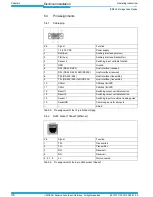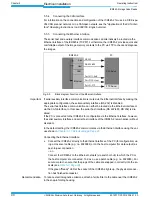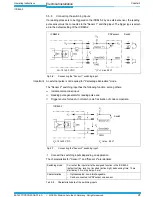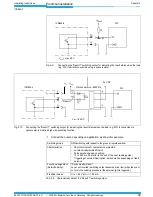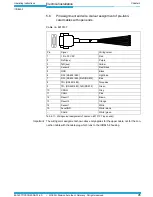
Chapter 4
Operating Instructions
ICR845-2 Image Code Reader
30
©
SICK AG · Division Auto Ident · Germany · All rights reserved
8012377/ 0000/ 2008-01-30
Installation
For detailed information about installation and electrical installation, see the "CDB620 Con-
nection Module" Operating Instructions (no. 8012119) or "CDM420 Connection Module"
Operating Instructions (no. 8010004).
4.5.2
Installing the external reading pulse sensor
If the ICR845-2 is triggered by an external reading pulse sensor (e.g. photoelectric reflex
switch), the sensor has to be installed close to the ICR845-2.
Fig. 4-8
shows two examples of where a photoelectric reflex switch can be installed. This de-
pends on the distance a from the code to the front of the object. Depending on the applica-
tion, you may need to attach the sensor in such a way that codes on objects of different
sizes can be read completely during the reading interval.
4.5.3
Installing the incremental encoder
If identical codes (code type, code content) have to been separated or if an track-contolled
delay of the external reading trigger is required, a suitable incremental encoder has to be
installed, e.g. no. 2022714. The increment pulses must originate from the area of the con-
veyor belt which the ICR845-2 is reading.
1.
Install the incremental encoder near to the ICR845-2, best against the direction of the
conveyor system in front of ICR845-2.
2.
Ensure that the incremental encoder has direct and fixed contact with the drive system
and that the friction wheel rotates without slipping.
4.6
Removing the device
Removal of the ICR845-2 is described in
Chapter 7.4.1 Removing the ICR845-2, Page 103
.
For the environmental friendly diposal after decommissioning see
Chapter 7.5 Disposal,
Page 104
.
Fig. 4-8:
Installation example for the external reading pulse sensor
Code in the middle or at the end of the object
Code at the beginning of the object
a
b
a
b a !
b
b a !





















